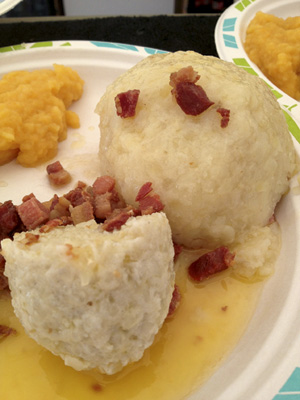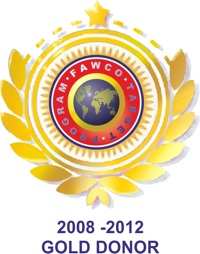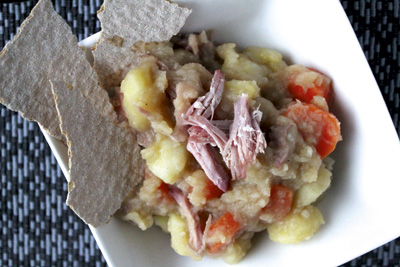Eating Norway – The Good, The Better and The Amazing
“So what is Norwegian cuisine like? And what’s with all of the boiled potatoes?” asked my mom back in 2007 when I first moved to Norway. At the time I wasn’t quite sure myself so I set out to find out more about Norway and about Norwegian gastronomy (including all the boiled potatoes). My newly acquired education about Norway’s cuisine resulted in starting of a food blog about my journey as an American attempting to enjoy the local Norwegian cuisine as well as stay close to my own culinary roots – both on a budget while living in Norway. Here is a short guide to Norwegian gastronomy and my tips for eating well at the Norwegian table.
What do people in Norway eat? How can one categorize Norwegian cuisine?
Traditionally speaking, in most regions of Norway, people tended to eat what grew or was raised in their part of the country or what they could grow or raise on their own. Norway is a very long, mountainous country and transporting food items from coast to coast was a tall order until more recent times. Due to this, and due to the country’s economic past, most of what Norwegians tend to eat depends on where they live and what their lifestyle happens to be. Norwegian cuisine can be categorized as rustic with a strong focus on good quality raw ingredients.
Breakfast
Weekday breakfasts tend to be hurried and quick, with heavy emphasis placed on dairy and grains. Weekend breakfasts tend to center around bread or rolls with pålegg (the stuff you put on top of bread-sliced cold cuts, cheese, various types of fish) or jam. Smoked salmon is paired with fluffy scrambled eggs. Peanut butter is rare, but becoming more popular. Museli and cereal are also eaten and served with buttermilk, milk or yogurt. Milk, various juices, coffee-very strong and dark- are common as well. Bacon and eggs are more common on Sundays or for special occasions.
Lunch
The culturally iconic Norwegian matpakke (two open faced sandwiches, or by U.S. standards, one sandwich, cut in half) is still quite the norm for children and adults alike in modern day Norway. Some adults enjoy a warm canteen lunch during work hours if provided for by their company. In much of the country, eating lunch out in a restaurant is relatively uncommon during work hours but more popular on weekends when meeting friends.
Dinner
This is the biggest meal of the day and usually consists of boiled potatoes, another vegetable and meat, game or fish. Chicken dishes are not as common but are gaining in popularity. Dinner is nearly always served with saus-a brown or white gravy, especially if potatoes are on the menu. Dark or light lapskaus, a Norwegian potato stew or brennsnut, a stew made from leftover meats, rutabaga, carrot, potato and broth are real treats-especially in winter. Fiskegrateng, poached salmon, meatballs with brown gravy, komle (also called klubb, kumle, kompe and rasballer), baked trout, leg of lam, cold smoked mackerel and pan fried cod are all common dinner entrees. Remincient of the American tradition, Sunday dinner with extended family hasn’t completely disappeared but has become less common in as people have moved further away from each other. Sundays almost always include a trip to Mom and Dad’s (or grandma’s) for cake and coffee.
Frozen convenience foods are very popular in Norway and Norwegians buy more frozen pizza than any other country in Europe.
Desserts and Cakes
The sweet dishes served after dinner normally fall into two categories in Norway – desserts and cakes. Cakes are not exclusive to after dinner, but desserts normally are. At fancy events like weddings and major birthday parties, both desserts and cakes are normally served. Desserts are usually heavy in dairy-so be aware if you are lactose intolerant. Ice cream is always a winner and summer staple, with vanilla being the most popular flavor. Some great cakes to try are bløtkake (layers of sponge cake, raspberry jam and whipped cream), suksesskake (“success cake”) or verdensbeste (“The Best Cake in the World”).
In Between Meals
Warm waffles served with brown cheese or sour cream and jam are a nice treat and common at family functions, during the skiing season or just about any other time of year. Boller, Norway’s version of sweet buns, are cardamom scented chunks of gluten-filled heaven. They are sold in raisin, chocolate or plain varieties. Slices of bread with various spreads on top are also popular as in between meals as well.
Coffee
Norwegians drink more coffee in the world than anyone else. They like their coffee very strong by American standards and nearly always black. If you like milk and sugar with your coffee, be sure to ask for it. Tea is normally served along side coffee in most occasions, but not always. Common types are earl gray and darjeeling.
Regional Differences and Specially Protected Foodstuffs
I live on the southwestern coast of Norway, which means locals eat a lot of seafood, lamb and locally grown produce. Stavanger is located just outside of Jæren, the “food basket” of Norway. Jæren is one of the regional districts in Norway responsible for producing a considerable amount of the country’s produce and livestock. Most local supermarkets carry produce grown within the local area and Norwegians are quite good about embracing locally produced goods. Besides Jæren, other regions with a sizable food footprint are Valdres and Røros.
Norway has developed the Beskyttet geografisk betegnelse, a set of agricultural guidelines that protect the economic interests of various foodstuffs. These guidelines make it illegal for products that do not follow the guidelines to be labeled as such products. For example, organic tjukkmjølk from Røros Dairy is the only dairy product which can be called tjukkmjølk anywhere in the world due to the Beskyttet geografisk betegnelse which outline and protect the integrity of the product. Kvitsøy lamb, fenalår, Ringeriks potatoes and Festsodd from Trøndelag are all examples of specially protected foodstuffs.
Boiled Potatoes
One thing you can always count on eating in Norway no matter where you live is boiled potatoes. Potatoes in Norway are usually boiled in slightly salted water and skinned before serving. I’m not a food anthropologist but I’ve been told that boiled potatoes have always been popular because they are relatively easy to cook, inexpensive, filling and easily grown in the soil conditions in many parts of Norway. People often joke that potatoes are served at every meal-even with pasta. Truth be told, they often times are.
The last few years have opened me up to the beauty of Norwegian gastronomy. Here is a short list of traditional and modern Norwegian foodstuffs to sample in case you want to eat your way through Norway and enjoying the good, the better and the amazing from the Norwegian table.

- Norwegian Strawberries Strawberry season is a short, but high point in summer. I’ve never been a huge fan of strawberries but the Norwegian variety are to die for! Try them and see what I mean – sweet and small – they are a variety you will fall in love with.
- Smoked salmon The best in the world, hands down.
- Smahove Looks scary (I suppose food which looks back at you while you eat it has a tendency to do that, right?), but will definitely make for a good photo opportunity. I hear the cheek cavity contains the best meat.
- Lutefisk Beloved and feared, lutefisk is a Christmas dish many in Norway enjoy. Try it and judge for yourself.
- Meatballs Norwegian ‘meatcakes’ are cousins to the Swedish variety, but better.
- Lefse Norwegian flatbreads, similar to tortillas. Usually served with butter and sugar, sometimes cinnamon too. Occasionally made with potato.
- Hot Dogs and Sausages Stavanger’s A. Idsøe butchery is the oldest butcher in Norway. Best hotdogs and sausages I’ve ever had as they are 90-95% meat plus are gluten free. If you ever make it to Stavanger, pop in for dried and cured meats plus excellent Norwegian cold cuts.
- Brunøst Caramelized whey, known as brown cheese in Norway, is sold in every grocery store or supermarket. It’s also starting to gain a following outside of Norway.
- Pickled Fish Herring and other types of fish are pickled in Norway and eaten year round but especially during the Christmas season.
- Leverpostei Liver pate is normally served on brown bread then topped with sliced red onions and sweet pickles.
- Fish pudding & fish balls The fishy versions of meatloaf and meatballs. Béchamel sauce is a common accompaniment.
Anything served during Christmas Norway’s best dishes are served during the Christmas season, commonly with aquavit. Cakes and cookies made with real butter, dried and cured meats, pickled fish, multe cream desserts and game make this the best time of year to eat your way through Norway.







